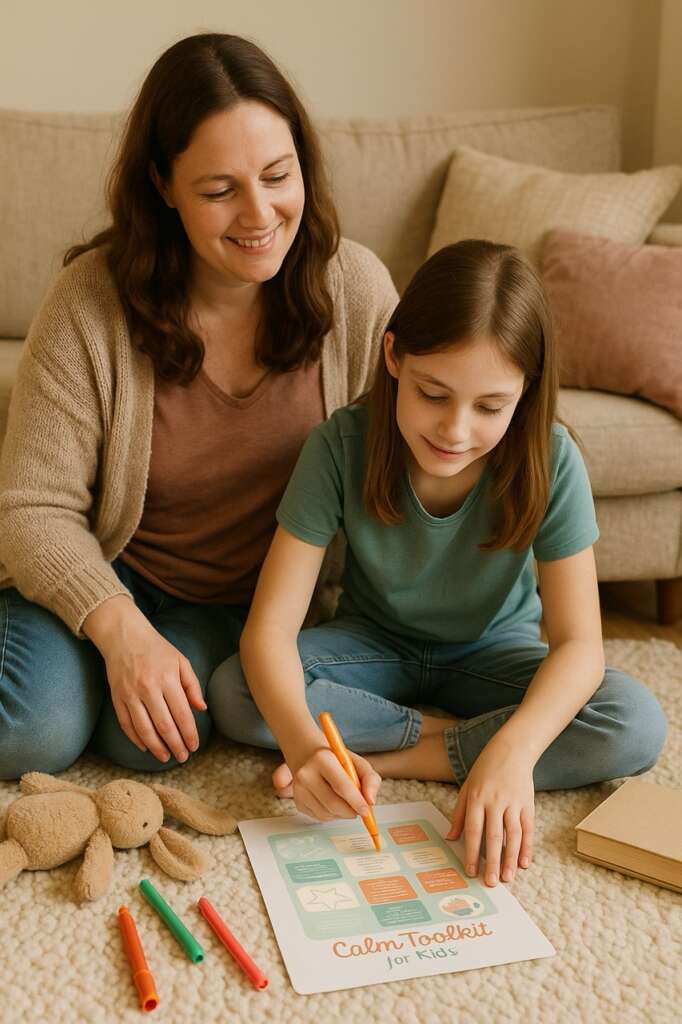How to Raise a Calm Child in a Loud World
In today’s overstimulating, fast-moving world, raising a calm child can feel impossible – especially if you’re not naturally calm yourself. But with the right tools, routines and mindset, it’s absolutely possible to build a peaceful, grounded home environment for your child (and you).
What Does It Really Mean to Be a “Calm Child”?
A calm child isn’t silent or passive. Calmness is not about suppressing emotions – it’s about learning how to navigate big feelings safely and confidently. A calm child can feel angry, excited or overwhelmed, but knows how to self-regulate or seek co-regulation with a trusted adult.
Why Calmness Is a Skill – Not a Personality Trait
Some kids are more naturally high-energy, sensitive or reactive. But calmness can be taught and modelled. Like walking or speaking, emotional regulation is a developmental skill. It builds over time through connection, safety, and repetition.
10 Strategies to Help Raise a Calm, Emotionally Regulated Child
- Model calmness (even when you don’t feel it)
Children mirror what we do more than what we say. Narrate your own regulation: “I feel overwhelmed, so I’m going to take a deep breath.” - Use visual routines
Predictability creates security. Morning charts, bedtime routines, and “what comes next” tools reduce anxiety and tantrums. - Build in white space
Downtime is as important as activity. Avoid overscheduling. Calm lives in the gaps. - Create a calm-down corner
A safe space with sensory items, soft lighting, books and cuddly toys gives them a go-to place when emotions get big. - Limit background noise and clutter
A chaotic space fuels chaotic feelings. Turn off the telly, clear the floor, and lower your voice. It works faster than you think. - Play gentle music or nature sounds
Soft instrumental music or ocean sounds can reduce stress hormones and help regulate heart rate. - Use mindful breathing tools
Teach simple techniques like “smell the flower, blow the candle” or use a printable breathing star to guide them visually. - Validate feelings without trying to fix
Say: “You’re allowed to feel upset. I’m here with you.” Calm doesn’t mean they feel ‘fine’ – it means they feel safe. - Use connection before correction
Before you redirect or ask them to do something, get eye level and connect: “I can see you’re busy. Can I ask you something?” - Celebrate calm moments
Reinforce when they’ve managed something well: “I noticed you calmed yourself when you were frustrated. That’s amazing.”
Printable: Calm Toolkit for Kids
Download our free Calm Toolkit to create a personalised calming space for your child. Includes emotion cards, breathing visuals, and calming activity prompts.
What If I’m Not a Calm Parent?
You don’t have to be zen 24/7. The goal is to try, repair, and grow together. When you lose your cool, show them how to make it right. “I’m sorry I shouted. I was overwhelmed. Let’s try again together.” That’s the real lesson: not perfection, but recovery.
When to Seek Extra Support
If your child struggles with regulation daily – especially alongside sensory issues, sleep difficulties, or anxiety – it may be worth speaking to your GP, SENCo or paediatric OT. Calmness isn’t always something they can access on their own. Support can make all the difference.
Final Thoughts
Raising a calm child in a loud world starts with small moments. Every quiet pause, every deep breath together, every time you choose connection over correction – you’re building something powerful. You’re not just raising a calm child. You’re helping them feel safe in themselves, and that’s the most important calm of all.


